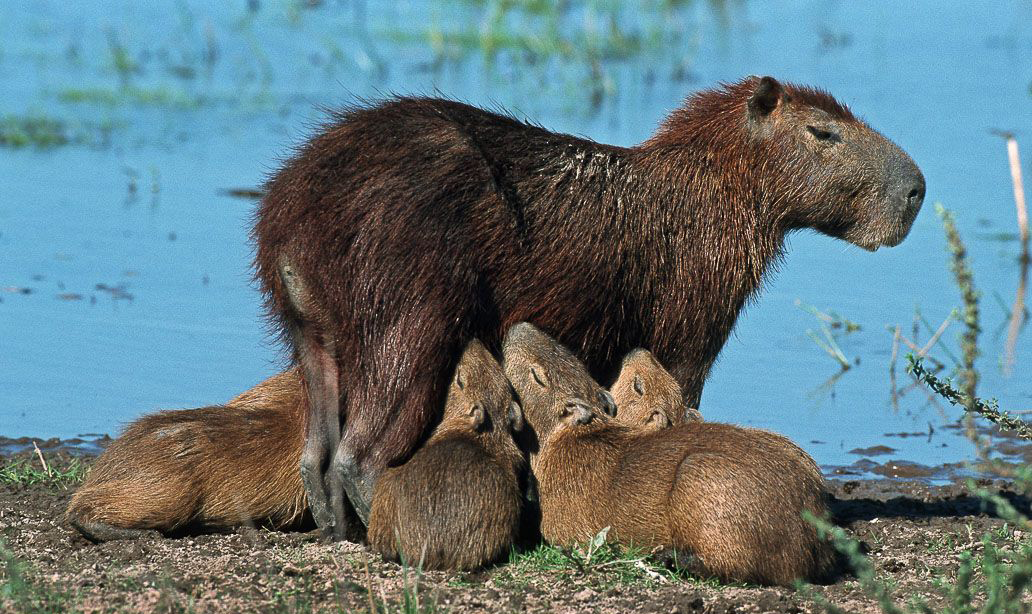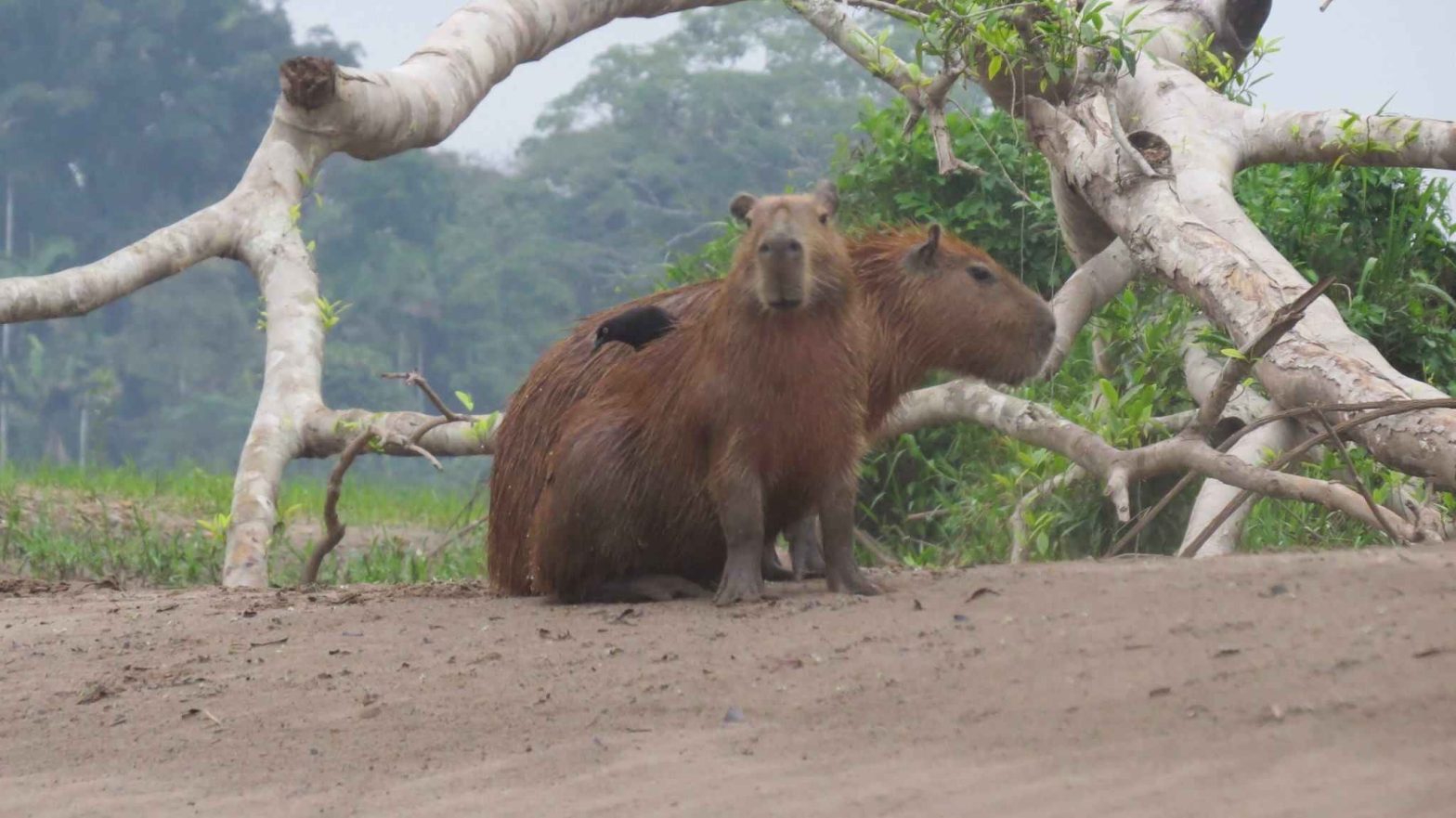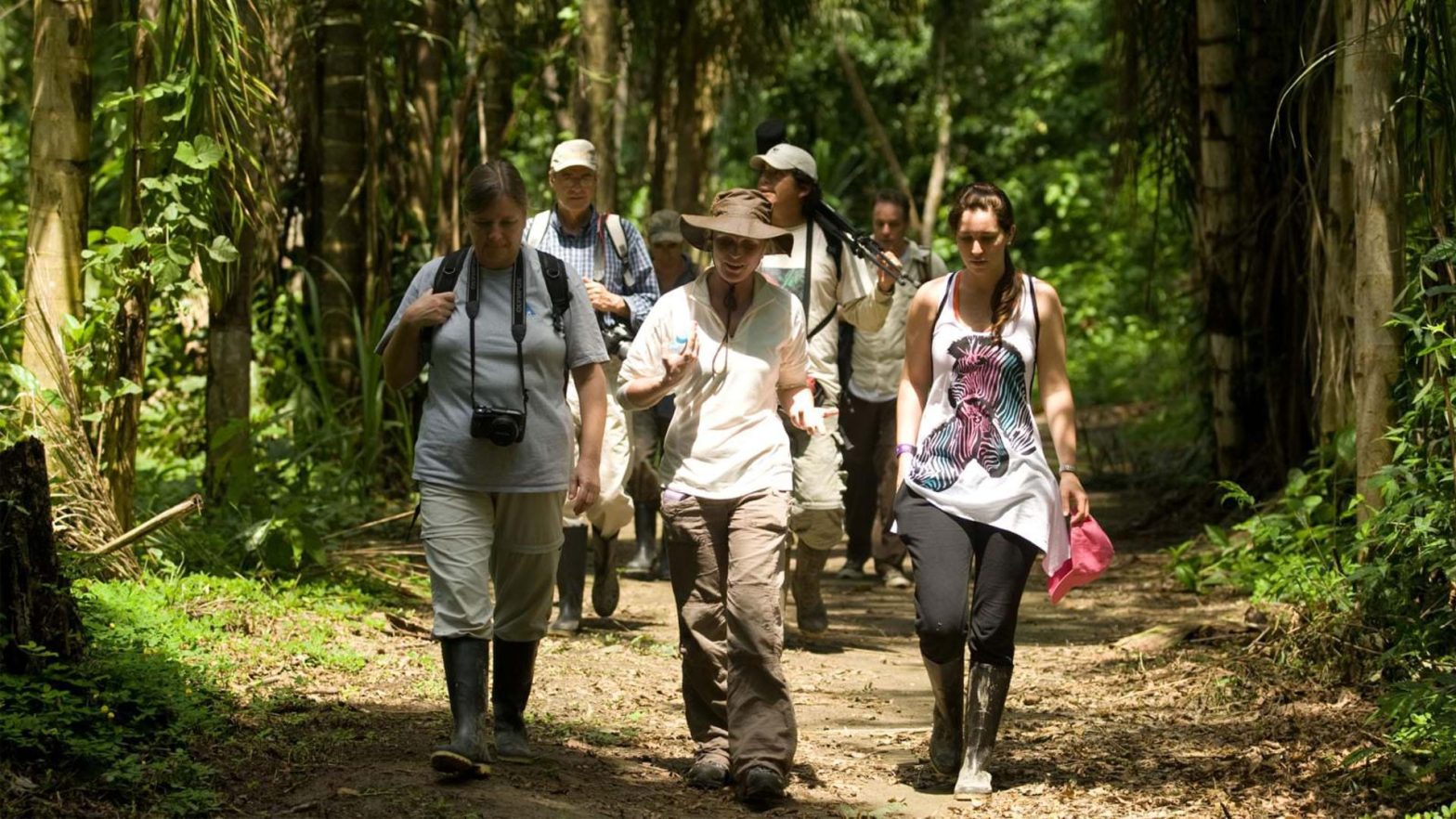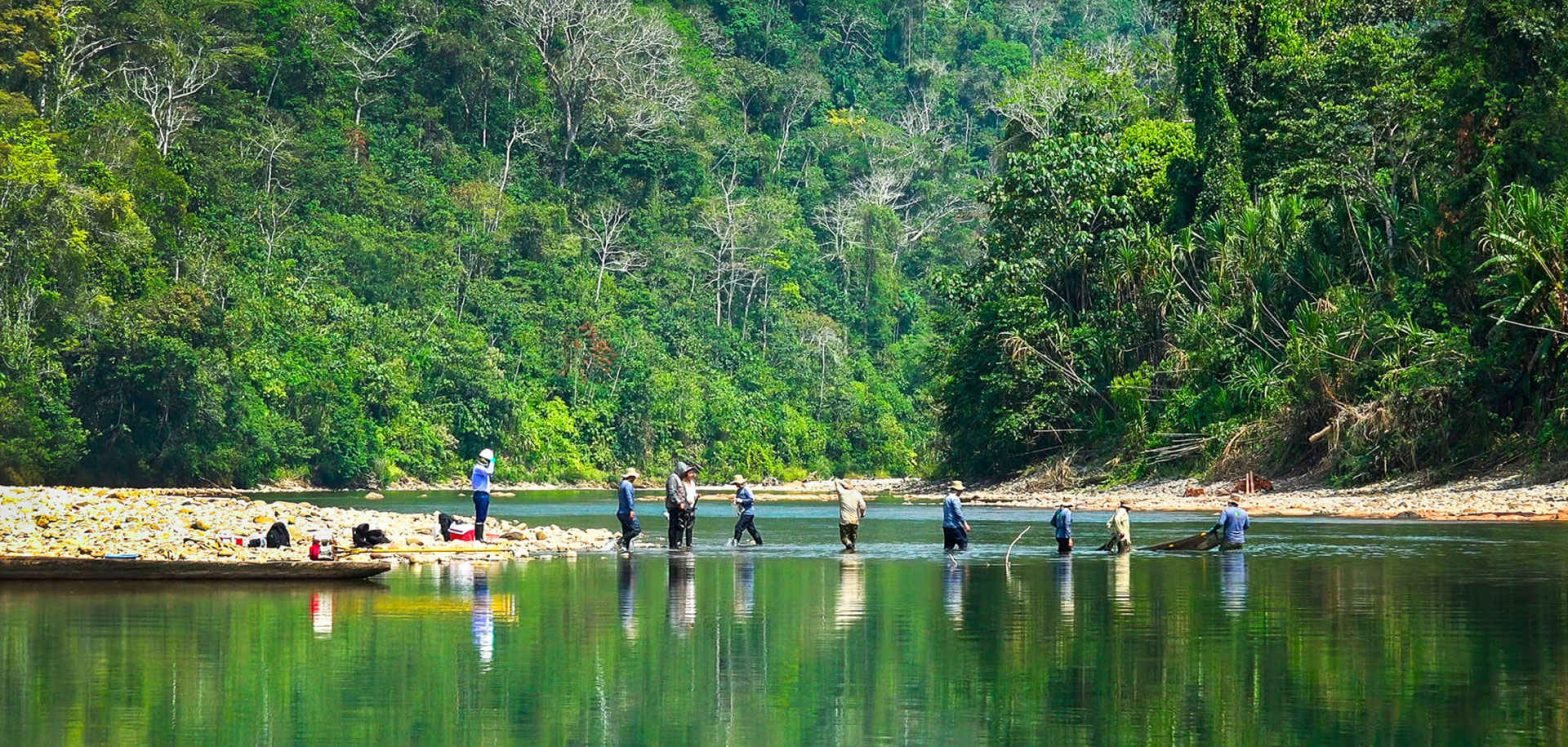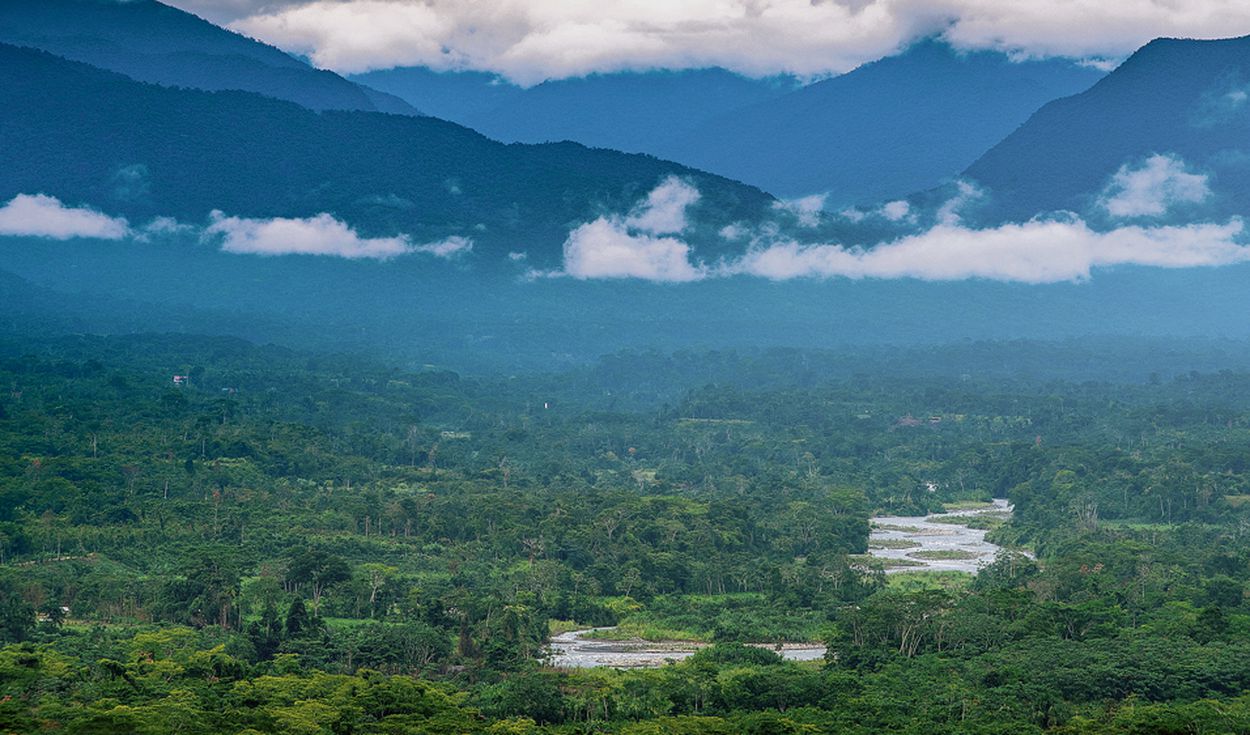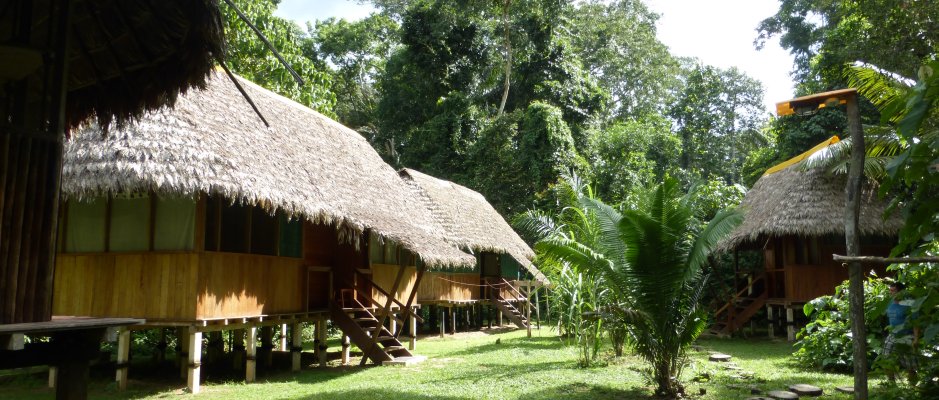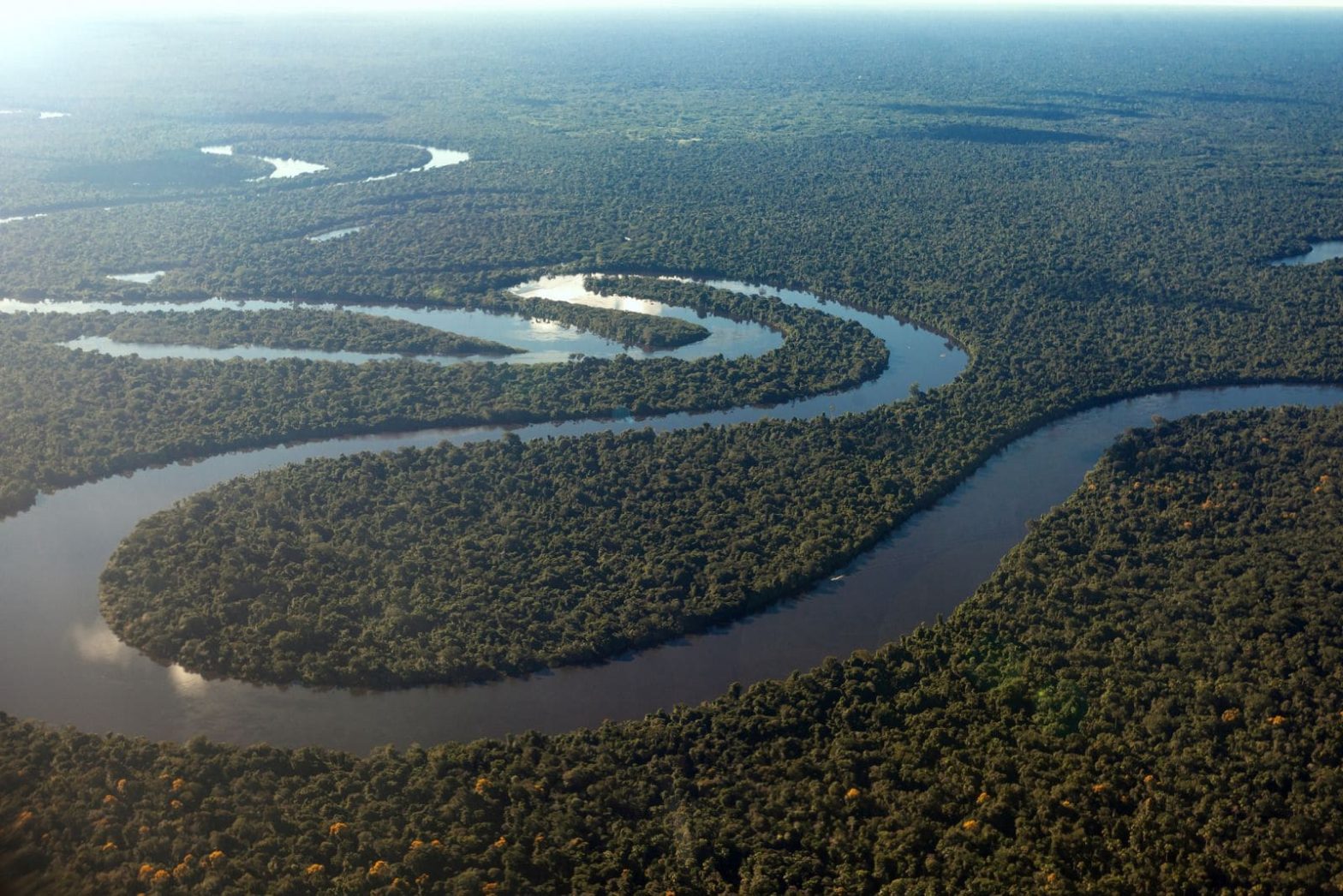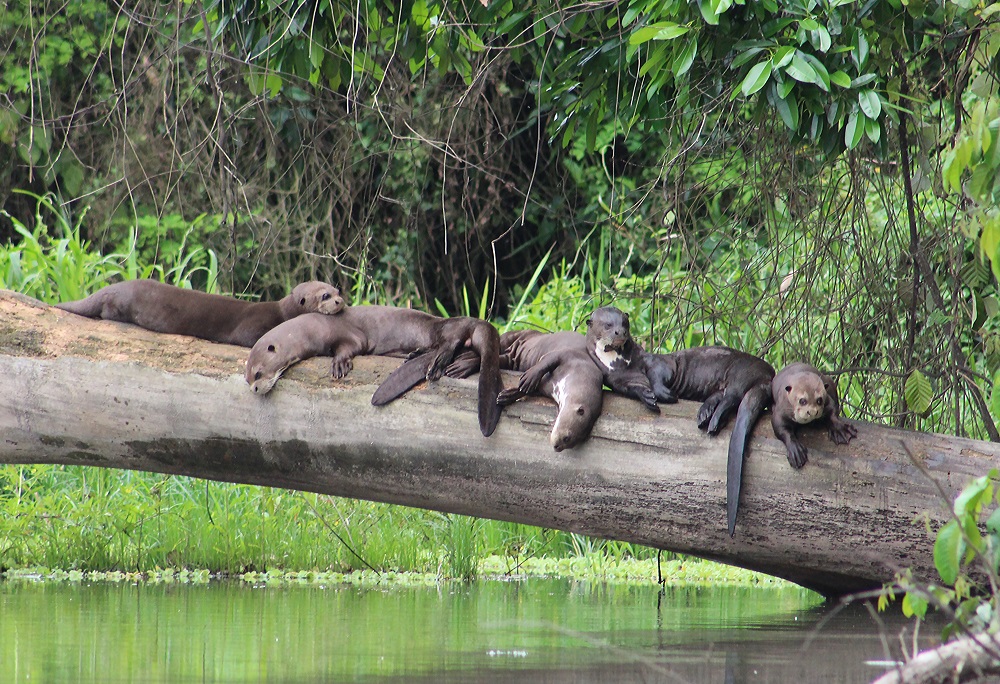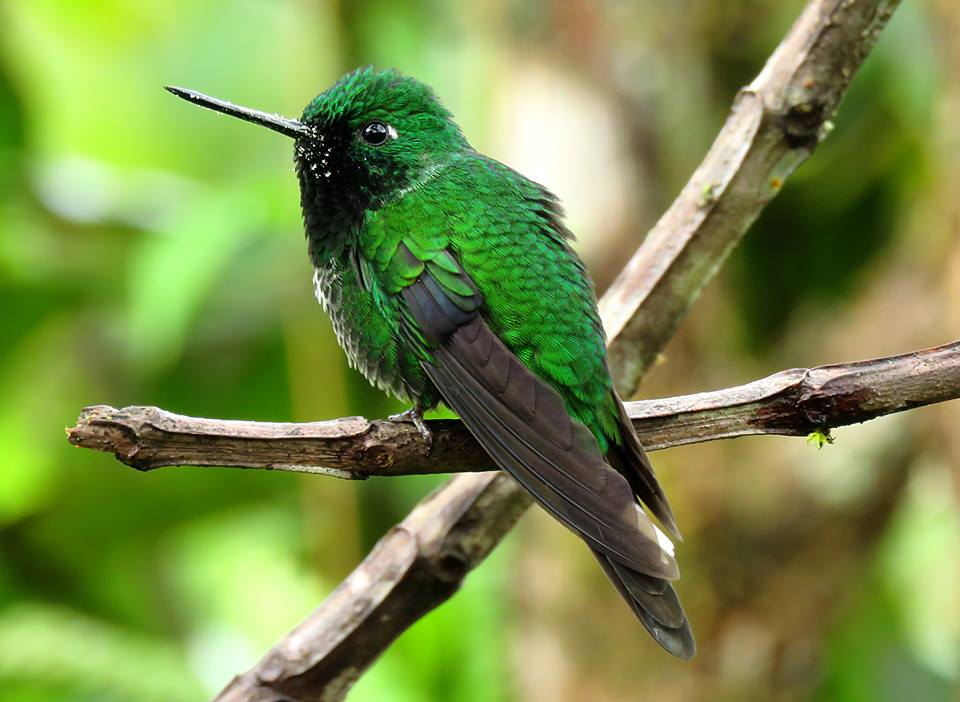Kosnipata Valley Manu Park
AMAZON WILDLIFE PERU LEADER: MATT DENTON: BIRDS
The Manu Wildlife Peru is unique in South America in offering birders the most accessible and diverse example of contiguous Andean east slope together with western Amazonia forest amazon wildlife peru, Kosnipata Valley Manu Park
a protected area harbouring over 1000 species. Our detailed coverage of this incredible altitudinal transectincludes a visit intothe wilds of actual amazon wildlife peru where our journey up the Manu River provides the
rare experience of a truly wild, lowland rainforest completely unaltered by man. The Manu 2009 reaped manygreat rewards with a total of 689 species recorded including memorable sightings of many of the south-eastern
Peru in amazon wildlife peru specialties: Blue-headed Macaws in lovely morning light, feeding AmazonianParrotlets, Black-capped Parakeets at rest, lekking Peruvian Piedtails, the localized White-throated Jacamar, two
separate White-cheeked Tody-Tyrants, Unadorned Flycatcher on territory, a nesting Semicollared Puffbird, a maleScarlet-hooded Barbet point-blank, the secretive Rufous-fronted Antthrush and a pair of Black-faced Cotingas to
name just a few. Each day brought an enticing selection of new birds providing many other spectacular highlightsworth mentioning. A pair of Razor-billed Curassows spied in the subcanopy, a Pale-winged Trumpeter that came
charging up to us, a covey of Starred Wood-Quails at our feet and a nesting pair of Solitary Eagle.
We had stunning views of a male Pavonine -Kosnipata Valley Manu Park .
Quetzal, an extremely brazen Amazonian wildlife peru Antpitta, and an Olive Finch that likewise gave us fineviews. Some of the nightbirds we saw included Andean Potoo, a Silky-tailed Nightjar on the trail at dusk, a male
Swallow- tailed Nightjar just overhead, a gold medal performance by a displaying male Lyre-tailed Nightjar and for some a
Crested Owl. In the cloud forests amazon wildlife peru enjoyed the bizarre displays of Andean Cock-of-the-Rock attheir lek and colourful tanager flocks included such gems as Golden-collared and Yellow-throated Tanagers and
Scarlet-bellied Mountain- Tanagers. In Manu National Park amazon wildlife peru Kosnipata Valley Manu Park weenjoyed a superb sighting of a Lowland Tapir walking in the shallows of the amazon wildlife peru River by day,
the family of Giant Otters crowned our catamaran experience on the always-superb Cocha Salvador KosnipataValley Manu Park , and the many troops of monkeys included the impressive Common Woolly and Peruvian Spider
Monkeys. The mountains and rainforest of amazon willdife peru never ceased to surprise us with something neweach day along the lodge trails or even in the garden just outside our chalet doors. A trip that leaves behind roads
and cities for comfortable lodges, pleasant boat travel, candlelight meals and pisco sours, white sand beaches,riots of colourful macaws, and a steady procession of new birds. The tour began with a flight to the historic city of
Cusco, and an easy day of birding at nearby Huacarpay Lake. Here in the arid scrub surrounding the lake our maintarget was the Bearded.
2 Birdquest: The amazon wildlife peru -Kosnipata Valley Manu Park :
Mountaineer with whom we eventually connected, later finding it a common bird in the garden of our SacredValley hotel. In addition to the mountaineer we found a nice selection of more widespread birds that included
Andean Lapwing, Giant Hummingbird, Streak-fronted Thornbird, Yellow-billed Tit-Tyrant, Blue-and-yellow Tanager and the endemic Rusty-fronted Canastero. The lake had a smattering of waterfowl that included Puna and Sharp-
winged Teals and Yellow-billed Pintail and in the surrounding marsh we saw Plumbeous Rail, Wren-like Rushbird and Rufous-naped Ground-Tyrant. Our first picnic lunch of the tour was done in customary fine style and an
Andean Negrito at the edge of the marsh rounded out the day. the next day we began our journey to the Manu Biosphere Reserve amazon wildlife peru aboard our well-equipped and comfortable expedition bus. Our first
sighting of the morning was an Andean Tinamou spotted crossing the mountain road and pausing in the field above us Kosnipata Valley Manu Park.
The road then took us through several typical Quechua villages of hardy highland
farmers in whose fields we saw a flock of Spot-winged Pigeons and from which we sorted through flocks of Peruvian, Mourning and Ash-breasted Sierra- Finches and Black- throated Flowerpiercer for a particularly
handsome mountain-finch. After some initial frustration with a wary first bird, we all had fine views of a second group of the endemic Chestnut-breasted Mountain-Finches. Continuing the journey we had good luck in finding
Andean (split from Black-faced) Ibis at our usual stake-out, and a Slender- billed Miner was spied blending with the sun-parched landscape. Eventually we arrived at a series of inter-Andean valleys, a biome rich in restricted-range
taxa throughout the continent, and within no time we were enjoying a pair of noisy Creamy-crested Spinetails. Soon we reached the 3800 metre pass of Acjanaco Kosnipata Valley Manu Park, our doorway to another world, for
this was the starting point from which we would begin to descend the eastern Andean slope. Kosnipata Valley Manu Park amazon wildlife peru the ever-changing weather featured only scattered fog as we enjoyed a nice
selection of birds that included Brown-backed Chat-Tyrant, White-browed Conebill, Moustached Flowerpiercer, and Plaincoloured Seedeater. Loading onto the bus we drove down into rather thick fog that eventually cleared after
losing some altitude and allowed us to excellent sightings of Grey-breasted Mountain-Toucan, a Puna Thistletail responding to playback, and a frenzied flock of tanagers and flycatchers that included the incomparable Grass-
green Tanager as well as Chestnut-breasted Mountain-Tanager alongside its plainer brethren the Drab Hemispingus. That evening we spotlighted a fine male Swallow-tailed Nightjar making display flights overhead
and flying in for incredible close-ups.
That evening we had the relative -Kosnipata Valley Manu Park
comfort of bunk-beds along with hot showers and tasty food at the Wayquecha Lodge, a cloud forest biological station owned by the Amazonian wildlife peru Conservation Association. The next morning from the station
grounds we began with a Scaled Metaltail in response to playback, a pair of Andean Parakeets passed in low flight overhead and a group of vocalizing Pale-footed Swallows was an added bonus. As we continued our descent,
mixed-flocks contained Scarlet-bellied and Hooded Mountain-Tanagers and a superb pair of Golden-collared Tanager. In these misty, bamboo-choked, epiphyte-laden temperate forests we tracked down small passerines such
as Black-throated Tody- Tyrant, Fulvous Wren, the endemic Marcapata Spinetail and the exquisite Maroon-chested Chat- Tyrant (split from Slaty-backed), in addition to other stunning cloud forest birds that included
Goldenheaded Quetzal, Masked Trogon, Barred Fruiteater and White-collared Jay. The avifauna continued to change as we descended with new birds such as Blue-banded Toucanet, both Andean and Whiteeared Solitaires,
Barred Becard, White-browed Hemispingus, Pale-legged Warbler and Dusky-greenb Oropendola all seen well. Kosnipata Valley Manu Park
Surely one of the major highlights though was when
Henco made an almost impossible spot of an Andean Potoo on its day roost. The first of our Manu wildlife peru was the Cock-of-the-Rock Lodge, an aptly named place as just a fiveminute walk took us into a semi-open hide
from which we watched the amazing displays of Andean Cock-of- the-Rocks at their lek. We watched the bright orange males strut and dip their crested heads with their wings raised in excitement and their voices often
reaching a crescendo at the appearance of a dimly plumaged female. Here in the Kosñipata valley some of the many highlights included a superb sighting of Crimson-bellied Woodpecker, several pairs of Versicoloured Barbets,
a secretive.
3 Birdquest: The Manu amazon wildlife peru -Kosnipata Valley Manu Park :
Slaty Gnateater from the forest understorey, a pair of Crested Quetzals in a fruiting tree and chunky roadside Highland Motmots. Hummers visiting the lodge feeders and flowering shrubs included Wire-crested Thorntail,
Many-spotted Hummingbird, Violet-fronted Brilliant and Sparkling Violetear. In addition to great birds near the lodge we also drove up and down the road that transects the cloud forest, stopping for mixed flocks and sampling a
wide array of elevations. Here amidst this breathtaking scenery of unbroken cloud forest, steep mountainsides and deep valleys we saw Sandy’s much requested Black-and-chestnut (or Isidore’s) Eagle soaring overhead. Just
moments later Jake made a second great feat of raptor spotting of a Solitary Eagle soaring with possibly a snake in its talons and then perching below the road. After some careful searching it was Keith who spotted the actual nest
where a begging chick was seen with its magnificent parent Solitary Eagle perched nearby. Later that evening we were thrilled by the truly awesome display of a male Lyre-tailed Nightjar as it made a long series of nearly
continuous flights from a close perch, eliciting cries of wonder from the admiring throng of birders.
In the temperate forest wesometimes struggled
to find mixed foraging flocks but still managed good views of some of the jewel-like Tangara tanagers including Golden-naped, Golden-eared, Golden, Beryl-spangled and Blue-and-black Tanagers as well as the somewhat shy
Yellow-throated Tanager. Mid-storey flocks held the endemic Inca Flycatcher, the retiring Striped Treehunter, and in the dense understorey we had good views of White-crowned Tapaculo and the unobtrusive Unadorned
Flycatcher.More good birds awaited us in the foothill zone below the lodge where an Amazonian Umbrellabird was seen at the road’s edge, the recently-described Rufous-browed Tyrannulet was spied in a flock, a Peruvian Piedtail
gave us a point-blank scold with its tail spread wide, and a singing Olive Finch in great light on an exposed perch was unforgettable. A few of us had a good view of a male Whitebacked Fire-eye and then a Lanceolated Monklet
was spotted sunbathing on an exposed perch from the moving bus. We all piled out of the bus to scope this scarce little puffbird as quickly as possible only to have it fly in even closer for more views.
Our bamboo birding also got off to a great start here in the foothills
with lengthy studies of the smartly plumaged White-cheeked Tody-Tyrant, an obligate bamboo-specialist. Late in the afternoon after seeing Black Antbird and Stripe-chested Antwren, we finally descended upon Atalaya where we
switched modes of transportation for the short ride across the Rio Madre de Dios. In the late afternoon we arrived in the clearing at Amazonia Lodge to enjoy a refreshing welcome drink of local citrus as we enjoyed a parade of
hummers led by none other than a male Gould’s Jewelfront. Our first morning at Amazonia Lodge began with torrential rain, however the garden birds did not mind the rain and the mahogany veranda was a great place to sit
and study the steady procession of hummers on the flowering porterweed hedge which included male Rufous-crested Coquettes (the lodge mascot), Golden-tailed Sapphire, Blue-tailed and Sapphire-spangled Emeralds, and
Greybreasted Sabrewing. Feeders also brought in plenty of Speckled Chachalacas, Masked Crimson Tanagers, Red- capped Cardinals, Black-billed Thrush and Black-and-white Seedeaters.
Furnarids such as Pale-legged Hornero
and Plain-crowned Spinetails made the rounds and a White-lored Tyrannulet was called in for close views. A pair of Grey-necked Wood-Rails inspected newly formed puddles for prey, and as soon as the shower had passed there
was Blue-throated Piping-Guan, Blue-headed Parrot, Roadside Hawk , Chestnut-eared Aracari, Purplish Jay and nesting Chestnut-fronted Macaws and Yellow-rumped Caciques all doing their best to dry out. We all donned our
wellies and to begin our mid-morning walk we had great views through the scope of a male Fine-barred Piculet tapping away. A pair of resting Spix’s Guan feeding on palm fruits promptly followed and a cuddly family group of
Smooth-billed Anis was even scoped up.
The forest was still a bit drippy but we got right into it with the forest birds,
seeing a pair of Chestnut-tailed Antbirds, followed by great views of Pectoral Sparrow and also Band-tailed Manakin. A Rusty-belted Tapaculo was next, and instead of having to find it walking along the dark forest floor,
this obliging fellow perched four feet off the ground on a horizontal branch and started singing his head off! With this great result we next tried our luck with yet another understorey denizen, a pair of Thrush-like Antpittas that
was seen well by nearly all of us. The lodge’s small oxbow lake was welcome respite and provided our first views of the amazon wildlife peru
4 Birdquest: The Manu Amazon Wildlife Peru:
The strange Hoatzin, as well as Great Kiskadee and Yellow-tufted Woodpecker. The floodplain forest surrounding the lodge continued to yield new birds during our stay with highlights including the tiny Short-tailed Pygmy-
Tyrant perched so low we could really appreciate its size , a mixed flock with Red-billed Scythebill, Slender-billed Xenops and Chestnut-vented Conebill and a singing male Lemon-throated Barbet. After initially trying to see an
impossibly hidden individual with only partial success, we tried a second territory for Amazonian Antpitta with Cathryn first spotting what was voted our bird-of-the-trip, perched up right before us on a trapeze like vine five
feet off the ground! This aggressive bird meant business, wanting no one intruding on his territory, and the looks we had were truly special.
We also ventured up into the hill forest behind the lodge -Kosnipata Valley Manu Park
where a Barred Forest-Falcon flew in for good views and a pair of Razor-billed Curassows flushed from the trail allowing us all to see this fabulous bird in the subcanopy. A family group of White-browed Purpletufts and a
beautiful White Hawk were highlights from atop the canopy tower, while down below we saw Round-tailed Manakins at a lek, but activity was slow until the late morning when we started to pick up some mixed flocks with
Tschudi’s Woodcreeper (split from Ocellated), Rufous-tailed Antwren, Olive Tanager, Golden-bellied Warbler, Bluish-Slate Antshrike and then a subcanopy tanager flock led by White-winged Shrike-Tanager and Yellow-crested
Tanager with Yellow-bellied Tanager and Rufoustailed Foliage-gleaner in tow. Later that evening, a Southern Tawny-bellied Screech-Owl perched at the lip of his tree roosting cavity provided yet another lasting from
Amazonia amazon wildlife peru. After saying goodbye to our hosts at Amazonia Lodge we loaded onto our comfortable boat for the short ride down the headwaters of the
Alto Madre de Dios,
where Fasciated Tiger-Herons patiently standing in the rapids were commonplace. Our departure was timed perfectly to coincide with the activity at a parrot clay lick at which we had excellent views of the rare Blue-headed
Macaw bathed in tropical yellow morning light. After seeing the birds both on the clay wall and in flight we continued to our lodge placed at the base of the Pantiacolla Range. Within just moments of arriving a male
Scarlet-hooded Barbet appeared at close-range, a great start to our bamboo birding that was followed quickly by a smart male Ihering’s Antwren on territory and then the chattery notes of Amazonian Parrotlets alerted us to their
presence for yet another excellent sighting. Further along a Rufous-headed Woodpecker suddenly appeared on a low perch overhead, a Black-throated Toucanet (split from Emerald) was seen feeding on fruits, a pair of
Cinnamon-throated Woodcreepers responded well to playback as did Strong-billed Woodcreeper and Striated Antbird. In the afternoon we started off with a pair of Goeldi’s Antbirds, a Flammulated Pygmy-Tyrant showed to
some, a Musician Wren in song gave us all many great views, a Dusky-tailed Flatbill was gradually brought into close view and we finished the day with a responsive Brown-rumped Foliage-gleaner. The next day we continued
our boat journey beyond the forested ridges to the perimeter of the vast Amazon basin and the fabled Manu River. After signing in at the ranger station we were now for the first time within the actual park boundaries.
Venturing up the Manu River
is for many the once-in-alifetime experience of the planet’s last great refugium, and in the mesmerizing play of water and sun under a spectacular skyscape of puffy cumulus clouds, our minds contemplated the untouched
rainforest, its jaguars and ‘uncontacted’ indigenes within. This year the water levels of the Manu River were quite high allowing us to advance past the usual maze of logjams but there were far fewer sandbars than usual. Although
we dipped on the big cat, there were far greater numbers of waterbirds here than on the rocky Madre de Dios river with several family groups of Orinoco Goose, numerous Large-billed and Yellow-billed Terns, Black
Skimmers on the wing plying the shallows, smart-looking Pied Lapwings and numerous Collared Plovers. We watched sunbathing Horned Screamers with their huge feet taking slow steps on these serene beaches, our passing
seemingly just a curiosity to them. Further spectacle was provided by multitudes of Sand-coloured Nighthawks roosting on the fallen crowns of giant emergent trees naturally brought down during the previous rainy season.
During our stay inside Manu National Park amazon wildlife peru we birded the floodplain surrounding Cocha Salvador as well as the nearby terra firme forests. The highlight of our visit was our catamaran
birding on Cocha salvador, an oxbow lake famous amongst biologists and film crews for its family of Giant Otters and.
5 Birdquest: The Manu amazon wildlife peru :
Wealth of fauna. In the early morning hours we saw an impressive variety of birds from our catamaran that included of course plenty of water birds such as Anhinga, Rufescent Tiger-Heron, Agami and Capped Herons,
Green Ibis, Sungrebe and a very cooperative little Rufous-sided Crake. As per the norm in Manu amazon wildlife peru, early mornings were great for all three of the big macaws with Scarlet, Red-and-green and Blue-and-yellow
Macaws seen flying to their foraging sites. The forest edge was alive with Lettered and Ivory-billed Aracaris, Spot-breasted, Scale-breasted and Lineated Woodpeckers, Blackcapped Donacobius, Black-tailed Tityra and Plum-
throated Cotinga and eventually our summons were met with a response from a pair of the highly sought-after Black-faced Cotinga seen perched above the lake. A film crew from National Geographic was filming the otters
from a second catamaran, and we all marvelled at the family of five otters actively fishing on this massive oxbow lake.
We watched these endangered and fierce predators
provide one of the most charismatic amazon wildlife peru spectacles on the continent as they each devour up to
five kilograms of fish per day in audible, bonecrushing bites. We also saw the endangered Black Caiman here, the
otters’ sworn enemy with whom they often do battle. The forest trails here once again proved to have an
interesting mix of species, foremost among them the Pale-winged Trumpeter who came charging up to us for
superb views. A Bartlett’s Tinamou also gave us a similar performance with what was surely the record in length of
observation of any forest Crypturellus. Other highlights included our first Screaming Pihas, the seesaw routine of a
calling Golden-collared Toucanet, the spritely Dwarf Tyrant-Manakin, the grounddwelling Ringed Antpipit, a
Dull-capped Attila perched at nearly head-height, and finally a Rufouscapped Antthrush striking the most picturesque
pose at close-focus range. A visit up to the Pakitza ranger station was unfortunately rained out, but along the way
Henco brought to our attention a completely obvious and massive Lowland Tapir walking in the shallows of the
amazon wildlife peru Manu River by day. To see one of these normally nocturnal creatures in broad daylight was
truly special. Next we retraced our boat
journey back to Boca Manu and a short distance down the Madre de Dios.
Shortly after lunch we tracked down a Rufous-fronted Antthrush singing in a patch of successional forest and after
a protracted session of playback we all had excellent views of this rare bird. By lateafternoon we arrived at Manu
amazon Wildlife peru, another fine lodge providing access to a wide variety of Amazonian habitats, where we
ended the day with close views of two avian delights: Semicollared Puffbird and Black-tailed Leaftosser. Our first
morning was spent at the Blanquillo macaw clay lick where we enjoyed one of the great parrot spectacles of the
world. Hundreds and hundreds of birds consisting of shrieking Blue-headed Parrots and smaller numbers of
Orange-cheeked, Yellow-crowned and Mealy Parrots and Duskyheaded, Tui and Cobalt-winged Parakeet made
their deafening presence known, with most of them coming down to the clay wall to dine on their clay biscuits
with the typical noise and fanfare. There were several Little Ground-Tyrants to keep us entertained as we waited
for the macaws to gather their numbers and courage. The short wait for the macaws was well worth it and after some
initial hesitation around 60 Red-and-green Macaws descended to the wall to break off chunks of the hard clay they
so desperately crave. This macaw spectacle lasted for well over an hour and provided some great photographic
opportunities but eventually we had to tear ourselves away from this spectacle birding for our thrills in the bamboo!
We visited a couple of bamboo trails in the area for our remaining quota of bamboo specialists with highlights
including the smartly patterned Bamboo Antshrike, the recently described Manu Antbird, and with great effort
several of us had complete views of Peruvian Recurvebill (including the bill). From the area’s two canopy towers
there were White-bellied Parrots, a trio of Cream-coloured Woodpeckers in territorial dispute, c olourful Orange-
backed Troupial, Yellow-bellied and Blackfaced Dacnises and an inquisitive Grey Antbird, but canopy birding this
year was fairly slow in comparison to previous years with practically no flock activity. We also visited a second
oxbow lake where we found such localized species as Pale-eyed Blackbird and Black-billed Seed-Finch and in the
surrounding forest had excellent close encounters with a covey of Starred Wood-Quail, perched Rose-fronted
Parakeets and a mixed flock with Orange-fronted Plushcrown. We worked the the amazon wildlife peru.















